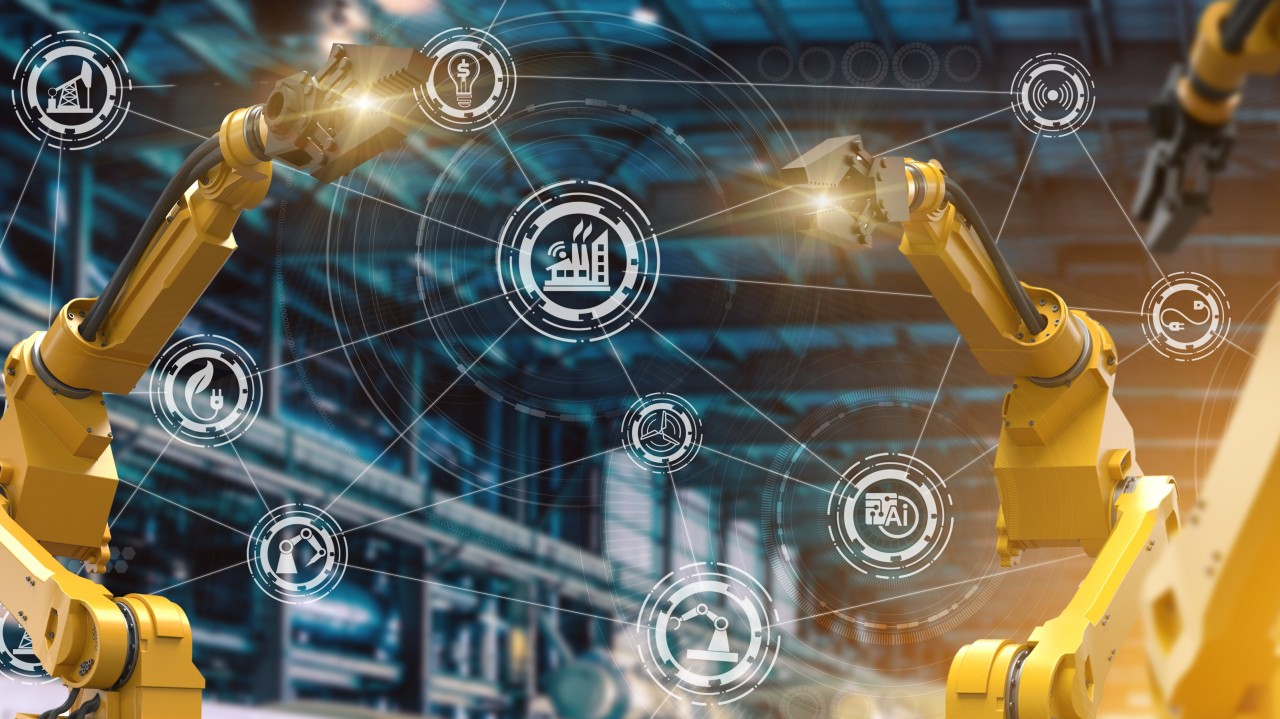|
Getting your Trinity Audio player ready...
|
By Bernard Marr
Smart factory is a term for industrial facilities that combine cutting-edge tech trends like artificial intelligence (AI), internet of things (IoT), digital twins, ultra-fast 5G, and robotics. By building these transformative technologies into all areas of their operations, they are able to lower costs, reduce waste and super-charge their manufacturing operations.
Today, far from being a sci-fi vision of the future, many of these technologies are quickly becoming a necessity for manufacturers that need to ensure competitiveness.
Communications giant Ericsson’s “5G factory” in Lewisville, Texas, has been recognized as a “global lighthouse” by the World Economic Forum for the pioneering way in which these technologies have been brought together into one facility. This week, I was joined by Åsa Tamsons, Senior Vice President and Head of Business Area Technologies and New Businesses and member of the Executive Team at Ericsson, for a conversation to discuss the future of the smart factory concept.
As well as simply creating business benefits for the owners of these facilities, a fundamental principle is that they are designed to minimize their impact on the environment. The Lewisville factory, for example, is entirely powered by renewable energy.
The factory manufactures the same 5G modems, radios, and base stations that are used in the autonomous robots that work there. Private 5G networking will play a big part in other companies’ plans to create their own smart factories and manufacturing facilities, and the Lewisville plant is the first to manufacture them in the US. This creates further efficiencies in both financial and environmental costs – removing the expense to US businesses of importing the devices from Asia, as well as eliminating the CO2 emissions used in transporting them.
What are the key technologies in smart factories today?
Underpinning the concept of the smart factory is the idea of IoT. This involves networks of online, connected devices of all shapes and sizes – known as “things” because they aren’t just made up of computers and smartphones and other common devices. In industrial terms, this can mean manufacturing machinery, cameras, and sensors that monitor everything from the operation of machines to security on the premises and automated robots or cobots (co-working robots) that work alongside the human employees.
Many of the technologies are considered to be using AI – because they are capable of learning and getting better at their jobs without necessarily needing input from humans. AI has many applications in the modern smart factory, from enabling predictive maintenance of machinery to allowing autonomous robots to safely navigate the workshop floor.
Extended reality (XR) – which includes virtual and augmented reality (VR/AR), is increasingly used in smart industrial settings. AR can be used to assist machinery operators such as crate drivers as they load and unload containers from ships, while VR is frequently used to assist in training workers in the use of heavy and potentially dangerous equipment.
And because all of these machines and technologies require huge amounts of secure and low-latency bandwidth, new networking protocols such as ultra-fast 5G mobile networking is an essential part of the infrastructure. 5G, in particular, is useful thanks to its capability to create “network slices” which are private and fully shielded from other areas of the radio spectrum, meaning there is no risk that interference from other devices will compromise performance or cause problems.
What are some examples of smart factories?
The Ericsson USA factory mentioned above is an example of a cutting-edge smart factory where all of this technology is combined across its 300,000 square feet – a workspace shared by over 200 humans and around the same number of autonomous robots!
Similarly, the Siemens factory in Amberg, Germany, is frequently used as an example of a highly advanced smart factory facility. It is used as a testbed for new manufacturing technologies as they become available and for piloting new initiatives in areas such as predictive maintenance. It is also home to the Impulse customer experience center, where other manufacturers can find information about all of the technologies which are used and decide which ones they want to adopt themselves.
Johnson and Johnson’s smart factory in Cork, Ireland, has pioneered “digital twin” models of simulating the physical processes involved in the manufacture of the medical devices created there. This enables the company to better understand the operations of its machines and production lines in order to lower costs and reduce waste.
And Tesla’s “Gigafactories” in California and Nevada, USA, are also often cited as among the world’s most advanced factories. Both are fully powered by renewable energy and have achieved net-zero levels of emissions. They are described by CEO Elon Musk as “a machine that builds machines”. Tesla plans to open another Gigafactory in Berlin, Germany, this year.
What is the future of smart factories?
Tamsons tells me that the arrival of 5G has brought with it a seismic shift in the power and potential of the smart factory by removing the need for devices to be tethered by cables or fiber optics. This, in turn, provides a huge boost to flexibility, with devices able to be retooled and repurposed on-the-fly, without sacrificing security.
She says, “That’s just the connectivity part … but it’s fundamental … because it’s an enabler of many of the other exciting technologies we see right now.
“Such as augmented reality, virtual reality – if you want to deploy AI at scale, and process data in real-time, as close as possible to where the action is happening – you also need connectivity.”
Likewise with autonomous robots – these are not an entirely new development in the world of industrial manufacturing, having been in use for several decades now – but marrying them with the AI, IoT, edge computing, and other of today’s emerging technologies means they are more powerful, flexible and useful.
“You have this amazing toolbox,” Tamsons tells me, “and it’s not about one alone, but about how altogether they create new opportunities.”
She also points out the ways in which smart industrial technology has evolved in tandem with advances in consumer technology. People used to the extreme simplicity with which they can operate powerful devices like smart cellphones, cars and televisions now ask why they shouldn’t expect the same streamlined experience while they are at work. This means creating similar experiences when they are operating industrial tools and machinery.
Most critical of all, though, is the potential for this technology to have real positive benefits when it comes to reducing power usage, CO2 emissions, and environmental impact. This is demonstrated by the fact that the Lewisville facility is Ericsson’s first to achieve gold certification under the Leadership in Energy and Environmental Design (LEED) scheme.
“I really hope we take the opportunity to play an important role in shifting how we produce and consume … I really hope [smart factories] are also the vehicle to reduce CO2 emissions and battle climate change.”
You can watch my webinar with Åsa Tamsons, Senior Vice President at Ericsson, by clicking here.
About Bernard Marr
Bernard Marr is a world-renowned futurist, influencer and thought leader in the field of business and technology. He is the author of 20 best-selling books, writes a regular column for Forbes and advises and coaches many of the world’s best-known organisations. He has over 2 million social media followers, over 1 million newsletter subscribers and was ranked by LinkedIn as one of the top 5 business influencers in the world and the No 1 influencer in the UK.






